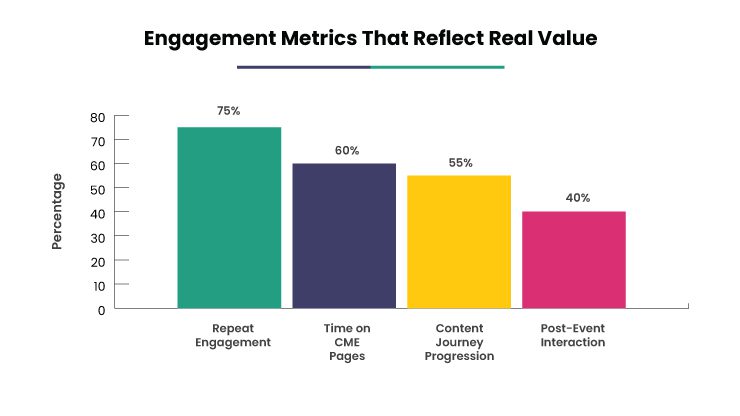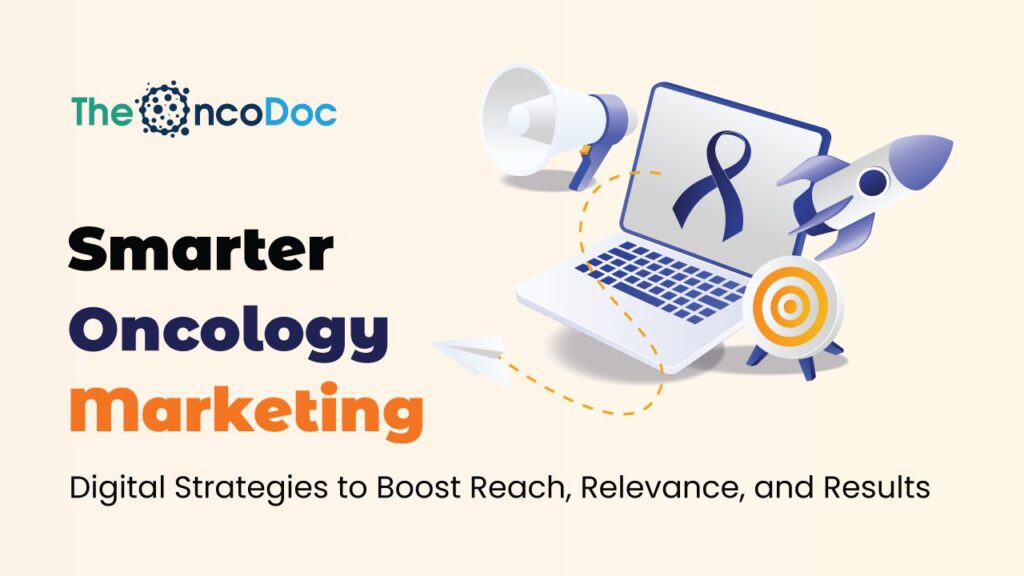Introduction: Rethinking Traditional Approaches
The oncology landscape is advancing at a rapid pace but the way we communicate with oncologists often hasn’t kept up. Conventional outreach tactics like generic emails, one-size-fits-all webinars, or static product PDFs frequently fail to resonate in a saturated digital environment.
To truly connect with oncologists and referring healthcare professionals, marketers need to adopt the same level of precision found in modern oncology therapies. This means delivering tailored messages, educational content, and resources that match a doctor’s role, specialty, and preferences. Precision digital marketing allows brands to build deeper relationships, earn trust, and support ongoing medical education in meaningful ways.
In this article, we’ll explore how data-informed, ethical, and tailored digital engagement can drive real results in oncology marketing.
Why Personalization Matters in Oncology Communication
Oncologists operate in a high-pressure, data-intensive environment. With limited time and a sharp focus on evidence-based medicine, they don’t have bandwidth for irrelevant or generic promotional material. Instead, they engage with content that:
- Reflects their specific area of focus.
- Offers valuable insights or updates.
- Is delivered via their preferred communication channel.
- Respects their time and intelligence.
When executed well, precision marketing can lead to stronger recall, improved participation in education programs, and more informed clinical interactions.
Common Digital Marketing Pitfalls to Avoid
1. Treating All Oncologists the Same
Failing to distinguish between a hemato-oncologist and a radiation oncologist, orassuming a referring GP has the same needs as a senior consultant, leads to wasted effort and lower engagement.
2. Delivering Overly Technical or Dense Content
Complex clinical data delivered without context or format optimization often gets ignored. Short, digestible content performs far better especially on mobile or instant messaging platforms.
3. Relying Solely on One Channel
Focusing only on email while ignoring platforms like WhatsApp, LinkedIn, or CME portals can result in missed opportunities. Different professionals prefer different formats.
4. Using Stale or Irrelevant Materials
Outdated research summaries, expired webinar invites, or unpersonalized follow-ups send a message that the brand is not keeping up.
Proven Tactics for More Effective Digital Oncology Engagement
1. Understand and Segment Your Audience
Start by identifying and categorizing your audience more effectively. Break down your HCP database by:
- Clinical specialty (medical, surgical, radiation, palliative care)
- Subspecialty (e.g., pediatric oncology, breast oncology)
- Years of experience
- Institution type (private hospital, academic center, regional clinic)
- Prior engagement patterns (past webinar attendees, frequent CME downloaders)
This foundation enables more relevant and personalized communication.
2. Deliver Value Through Curated Content
Ensure that each message serves a purpose and adds educational value. Some high-performing formats include:
- Short videos explaining trial outcomes or treatment mechanisms.
- Downloadable infographics summarizing updated guidelines.
- Expert-authored blogs or commentary on new approvals or standards of care.
- Localized data relevant to regional treatment practices.
Content should be optimized for the platform and consumption context- mobile, desktop, or in-person discussion.
3. Use Multiple Digital Channels to Build a Cohesive Experience
Oncologists are not a monolith. Some may respond best to WhatsApp messages, others to LinkedIn thought-leadership posts, and still others to detailed emails. A unified digital marketing strategy should include:
- Email campaigns for scientific updates and invites.
- LinkedIn InMail or posts for academic-style engagement.
- WhatsApp for reminders, quick reads, or post-webinar follow-ups.
- Sponsored articles or banner ads on medical websites for visibility in a professional setting.
The content and tone must match the platform- concise and engaging on WhatsApp, in-depth and scholarly on email or CME portals.

4. Create Sequential Content Journeys
Instead of isolated messages, guide your audience through a sequence that builds context and interest. For example:
- Start with: “Explore recent changes to breast cancer treatment protocols.”
- Follow up: “Watch our roundtable discussion with senior oncologists on evolving first-line therapies.”
- Conclude with: “Download our practical toolkit on therapy sequencing.”
By structuring your campaign in this way, you increase both engagement and retention.

Data Privacy and Ethical Engagement
With the rise of digital personalization comes greater responsibility. It’s essential to:
- Obtain clear consent before initiating any communication.
- Provide opt-out options in every message.
- Ensure transparency around sponsored or branded content.
- Adhere to data protection laws like India’s DPDP Act or global standards such as GDPR.
Ethical marketing respects the HCP’s boundaries and builds credibility over time.
Real-World Example: Enhancing Trial Awareness via Micro-Content
A leading pharmaceutical brand focused on hemato-oncology wanted to raise awareness about a new clinical trial among physicians in South India. Instead of long-form emails, they produced short videos (under 3 minutes) featuring respected investigators explaining the trial in lay clinical terms.
The videos were distributed through both email and WhatsApp, with a follow-up CTA to book time with a local MSL. The result was a 57% click-through rate and over 30% of recipients scheduling meetings- outperforming traditional outreach methods significantly.
Metrics That Reflect Real Engagement
Go beyond surface-level metrics like impressions or open rates. Instead, track:
- How many oncologists engage with personalized content more than once.
- The depth of engagement such as time spent on CME pages.
- Progression through content journeys (e.g., download → video → webinar attendance).
- Increase in post-event interactions or referral queries.
These metrics offer a clearer picture of educational impact and brand value.

Conclusion: Personalization Is the Future of Oncology Marketing
In oncology, where trust, knowledge, and ethics intersect, personalization is not a trend- it’s a requirement. Brands that deliver relevant, timely, and respectful digital experiences stand out in a crowded market and build long-term credibility with HCPs.
Digital marketing in oncology must move away from mass messaging and toward strategic, segmented engagement. When you treat your audience as individuals with unique needs and preferences, you’re not just marketing, you’re partnering in the advancement of care.
The Oncodoc team is a group of passionate healthcare and marketing professionals dedicated to delivering accurate, engaging, and impactful content. With expertise across medical research, digital strategy, and clinical communication, the team focuses on empowering healthcare professionals and patients alike. Through evidence-based insights and innovative storytelling, Hidoc aims to bridge the gap between medicine and digital engagement, promoting wellness and informed decision-making.



